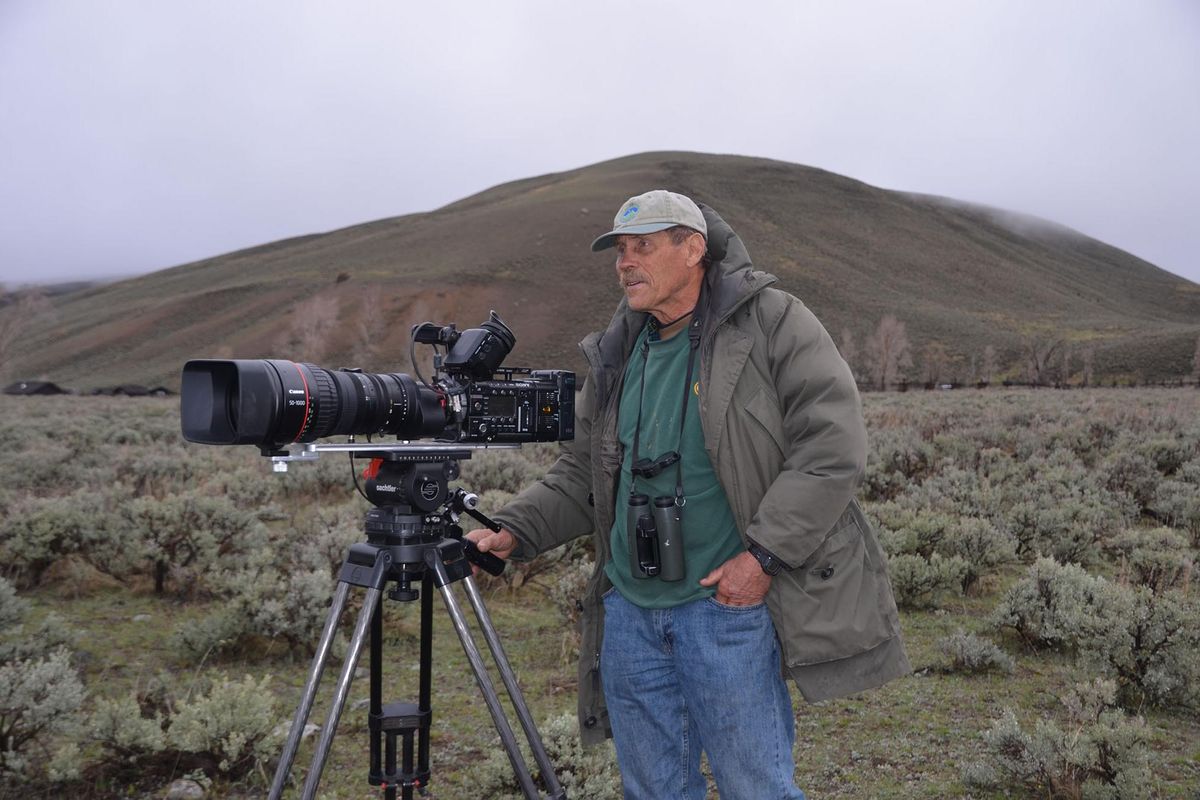Veteran filmmaker makes his office in Yellowstone National Park

Every week Bob Landis is hunting for a trophy, only instead of using a rifle to make the kill he’s packing a video camera.
The former teacher now veteran wildlife filmmaker, 78 , is possibly best known for his cinematography for the 50-minute documentary “In the Valley of the Wolves” that compresses three years of filming in Yellowstone National Park. But his wildlife images have been used in many other films produced by such prestigious titles as Nature and National Geographic.
One of his famous clips is a coyote’s encounter with a golden eagle at the Blacktail Ponds in Yellowstone. During the spring and winter several bison had fallen through the pond ice and died. As spring thawed the ice and the carcasses came out of “cold storage,” a variety of scavengers showed up for the feast.
Landis was there to film the encounters.
When a coyote dragged off what appeared to be one of the bison’s stomachs, a golden eagle saw a chance for an easy meal. Dive-bombing the coyote three times, the eagle appeared to be punching the canine rather than sinking in its talons, Landis said.
“It was more like it was counting coup, knocking the coyote down a little bit,” he said.
He’s filmed similar scenes before – one of his more famous is of an airborne bald eagle stealing food from a coyote’s mouth – but in his opinion this interaction was even better.
“Usually the coyote relents,” he said.
But not this time. Angry and annoyed, the coyote retaliated by leaping “almost vertical” at the big eagle the next time it swooped down.
Luckily, Landis captured the encounter in slow motion with his camera.
That may not seem like a big deal to cellphone owners who now have the technology to shoot slow motion. But back when Landis first started shooting, a slow-motion shot required special film and processing that would cost about $500 for one-and-a-half minutes of shooting time.
“With this it’s dirt cheap,” he said of digital cameras.
Landis got his start shooting wildlife films in Alaska and Denali National Park. He worked with pioneering wildlife biologist Adolf Murie.
His most recent trip to Alaska, at age 75, produced notable footage of a black wolf going nose to nose with a grizzly and shots of a sow grizzly chasing a small ground squirrel.
“That trip to Alaska that was like a victory lap, for sure,” he said, a reaffirmation that he’s not giving up on film making until they “take the camera out of my cold, dead hands.
“It’s too easy here,” he said from his home in Gardiner, Montana, at the edge of Yellowstone Park. “As long as I can drive and work out of the back of my car.”
Despite his many years of filming, often in harsh weather and with many long hours spent simply waiting for something to happen, Landis’ desire to capture unique and unusual wildlife encounters has not waned, although he’s tried to cut back his field time, which has peaked some years in his career at nearly 340 days.
“I’ve got to reconcile myself to the fact that it doesn’t pay to be out there every day,” he said. And yet, “You never know what you might miss. The worst words are: ‘You should have been here yesterday.’ ”
Slough Creek is a regular stop along his Yellowstone drive route. In the summer his routine starts at about 5 a.m. Because of the hours he keeps, the record-setting increase in Yellowstone visitation hasn’t been too visible to him, except when there’s a bison jam or other wildlife on the road that backs up cars.
“It’s the price you pay to film in the only temperate region in the world with such incredible wildlife opportunities.”
Outdoors correspondent Rich Landers contributed to this story.